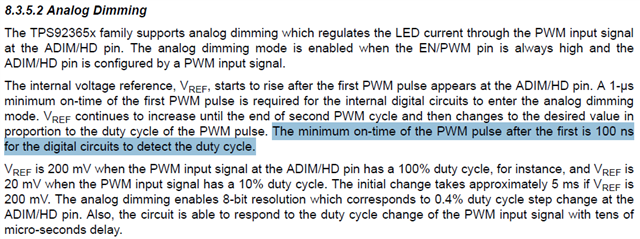Tool/software:
Hi team,
7.5 Electrical Characteristics in the datasheet lists 6-bit ADIM and 8-bit ADIM, but they are not fixed to these, are they?
For example, if I input a 50 kHz PWM, can I assume that 200 dimming steps are possible?
Best Regards,
Ryu.




